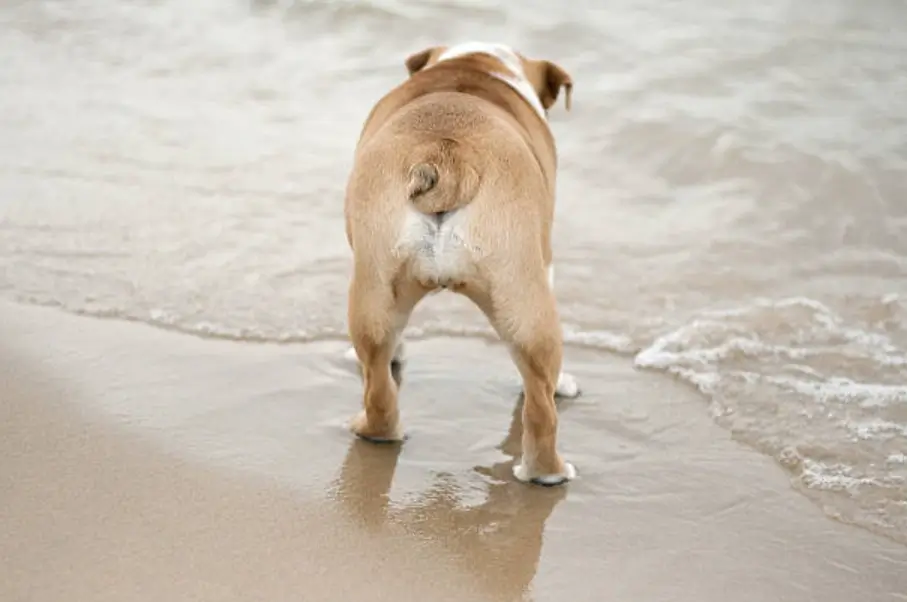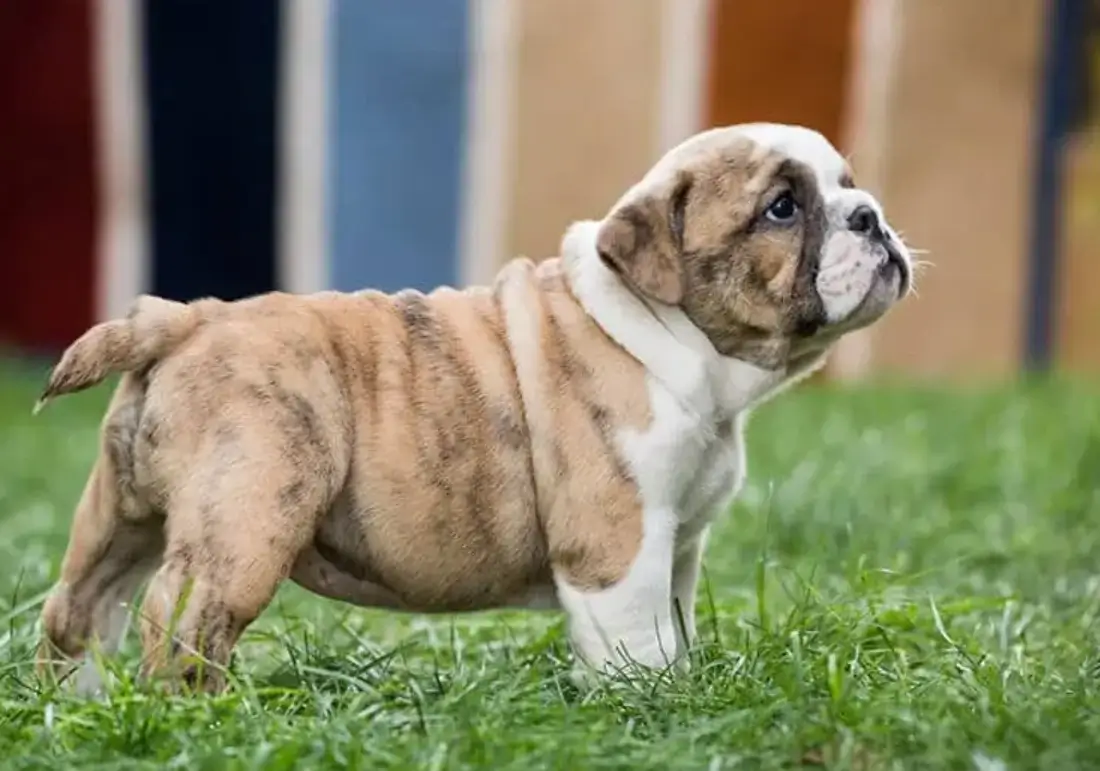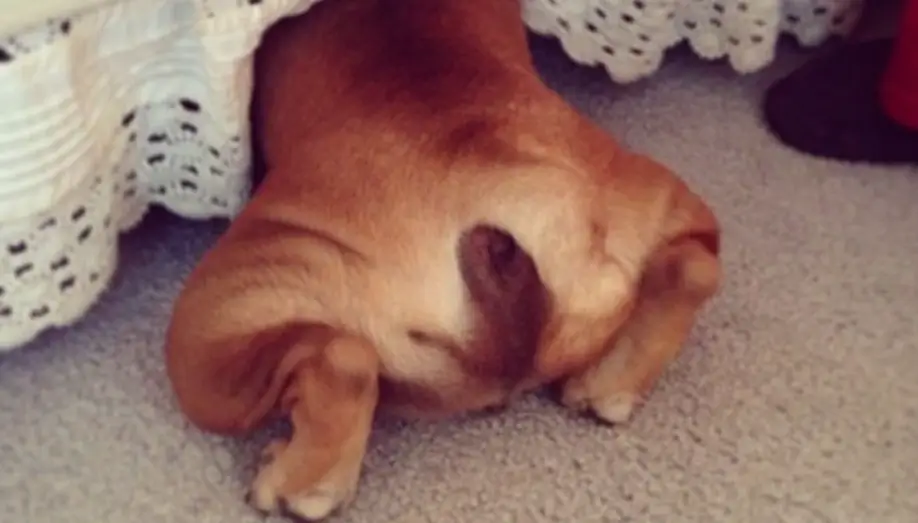English Bulldogs are popular and beloved pets known for their cute wrinkly faces and friendly personality. However, there are some questions about this breed that pet owners may have, particularly in regards to their tails.
Are English Bulldogs naturally born with a tail, or is it removed for aesthetic reasons? In this article, we will explore this topic in more detail, providing information on the tail characteristics of English Bulldogs and any variations that may exist among this breed.
Are English Bulldogs Born With a Tail?
Yes, English Bulldogs are born with tails, but their tails are naturally shorter than most other dog breeds. They have a short, straight, or screw tail. The characteristic “screw” or “corkscrew” tail is a distinctive feature of the breed. The actual size and shape of the tail can differ, but on average bulldog tails are not longer than 3 inches.
Types of English Bulldog Tails
Here are some common types of English Bulldog tails:
- Cock-screw Tail: This is the most common type seen in English Bulldogs. The screw tail is short, straight, and has a distinctive corkscrew or spiral shape.

- Straight Tail: Some Bulldogs may have a straight tail, which lacks the corkscrew appearance. It is still short and typically held low.

- Wavy Tail: This tail has a gentle, undulating or slightly curved pattern rather than a straight or tightly corkscrew shape. Bulldogs with wavy tails exhibit a charming and unique feature within the breed’s tail variations.

Tail Characteristics of English Bulldogs
The length of an English Bulldog’s tail is typically no more than a few inches long, and it is often straight or slightly curved. Some Bulldogs may also have kinked tails, which is a deviation from the usual straightness. While kinked tails might look unique, they can be associated with spinal cord issues in some cases.
In terms of shape, English Bulldog tails are broad at the base and taper towards the end. The tail’s overall appearance is often considered an important factor in breed standards. Many breeders emphasize the importance of a short, straight, and thick tail in their English Bulldogs.
- The length of the tail is typically only a few inches.
- Bulldog tails are broad at the base and taper towards the end.
- The tail’s appearance is often described as a corkscrew or tight curl.
- Some Bulldogs have kinked tails, which can be associated with spinal cord issues.
- The overall appearance of the tail is considered essential in breed standards.
English Bulldogs with Natural Tails
If you’re curious about whether English Bulldogs can be born with tails, the answer is yes! While it’s true that many English Bulldogs have their tails docked, there is a whole subset of the breed that has a natural tail.
The history of tail docking in English Bulldogs is not entirely clear, but it is believed to have originated in the 16th century for practical purposes, such as preventing injuries during hunting and fighting. However, the practice has continued for cosmetic reasons, particularly in the show ring.
In recent times, there has been a move towards preserving the natural tail in English Bulldogs. This decision has been based on the belief that dogs should be allowed to express their natural behaviors, including using the tail for communication and balance.
An English Bulldog with a tail can be a lovely sight, but there are also some potential downsides to consider. For example, a long, heavy tail can increase the risk of injuries and infections. Additionally, some dogs may experience discomfort due to their tail’s position or size. You should take these factors into account when considering an English Bulldog with a natural tail.
- Fun Fact: The United Kingdom passed a law in 2019 making tail docking illegal, except when performed for medical reasons.
Caring for an English Bulldog with a Tail
If you have an English Bulldog with a tail, you’ll need to take some special care considerations to ensure your furry friend stays happy and healthy. Here are some tips to help you care for your English Bulldog’s tail:
Grooming Techniques
English Bulldogs with tails require regular grooming to keep their tails clean and healthy. You should brush your dog’s tail at least once a week to remove any dirt or debris. You may also need to trim the hair around your dog’s tail to prevent matting.
When washing your Bulldog, make sure to avoid getting water in their tail pocket. This is a fold of skin under the tail that can trap moisture and lead to infection. Use a gentle cleanser and warm water to clean the tail area, making sure to dry it thoroughly afterward.
Exercise Considerations
English Bulldogs with tails may have some difficulty with certain types of exercise. Activities that involve a lot of jumping and running may put too much stress on your dog’s tail, causing discomfort or injury. It’s important to monitor your Bulldog’s activity levels and avoid anything that seems to cause discomfort.
Swimming is an excellent low-impact exercise option for Bulldogs with tails. It’s also a great way to keep your dog’s tail clean and healthy.
Potential Health Issues
Bulldogs with tails are prone to certain health issues related to their tail. One common problem is “happy tail syndrome,” which is when the tail hits hard objects and becomes injured or infected. In severe cases, amputation may be necessary.
Another issue is tail pocket infections, which occur when bacteria and moisture accumulate in the tail pocket. This can cause discomfort and pain for your dog, and may require antibiotic treatment.
Clean and Healthy Tails
To keep your English Bulldog’s tail clean and healthy, make sure to inspect it regularly for any signs of injury or infection. Keep the tail area dry and clean, and consider using a specialized cleanser designed for dogs with tails. By following these tips, you can help ensure your pet enjoys a happy and healthy life with their natural tail.
